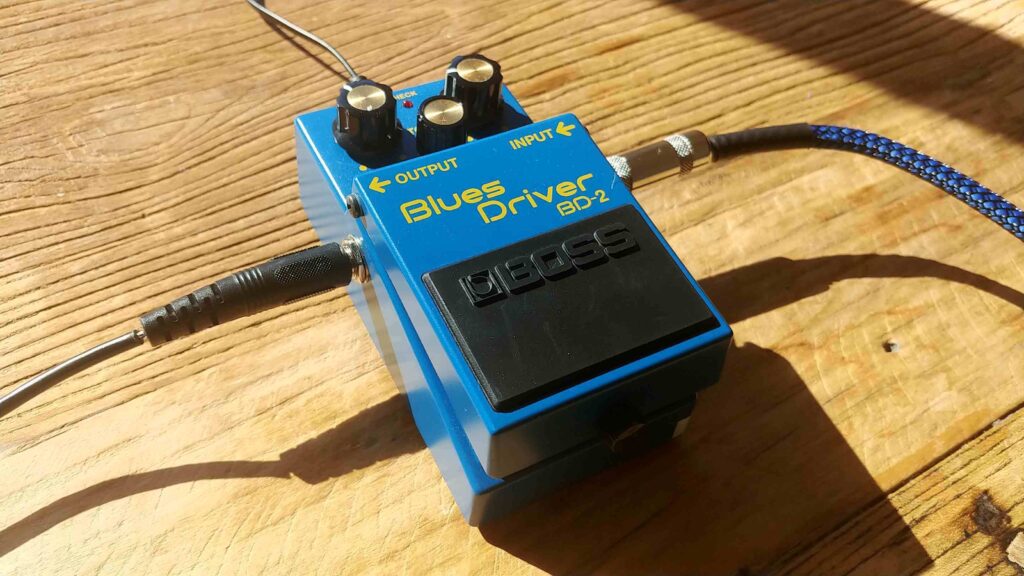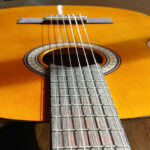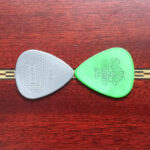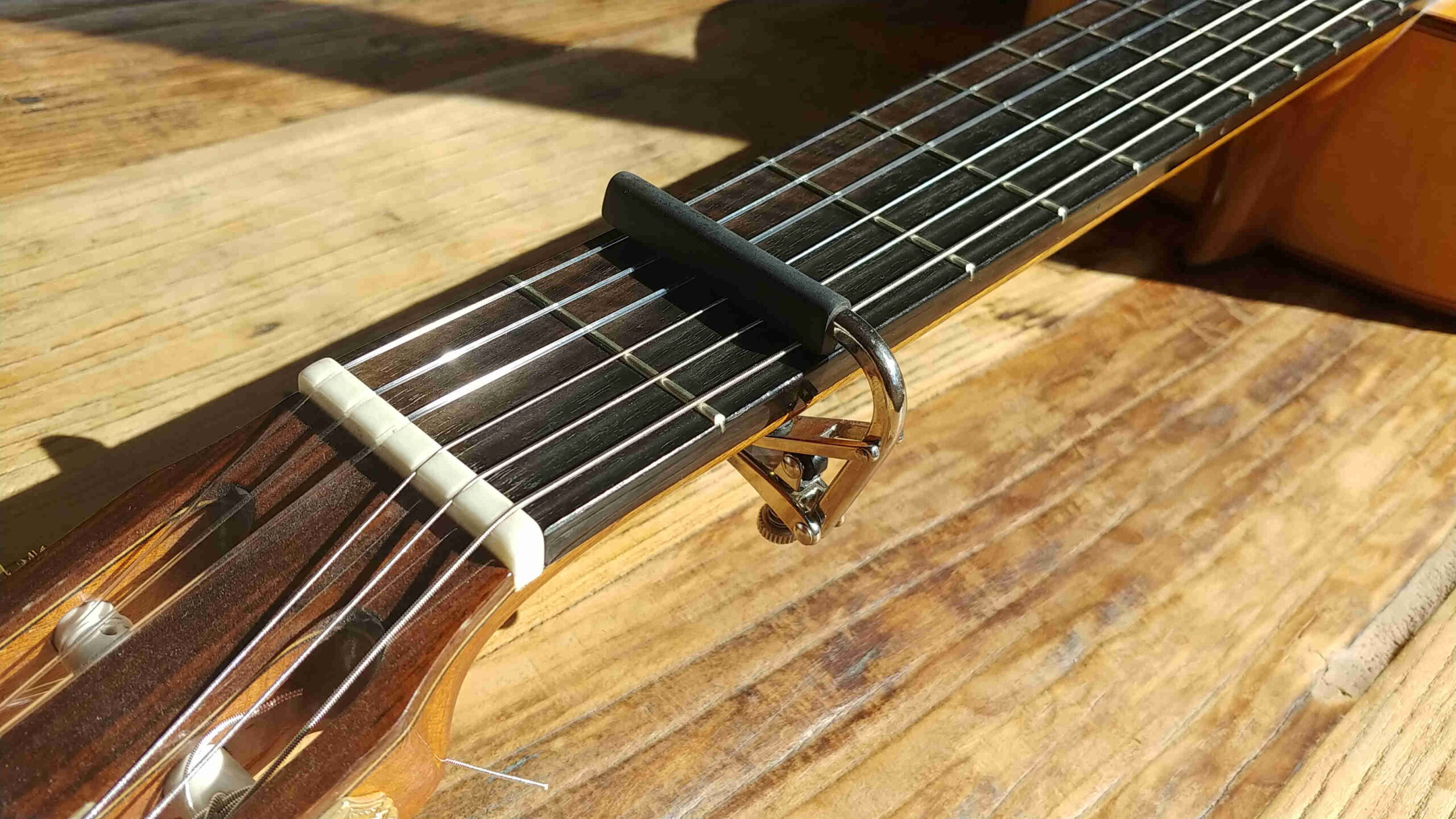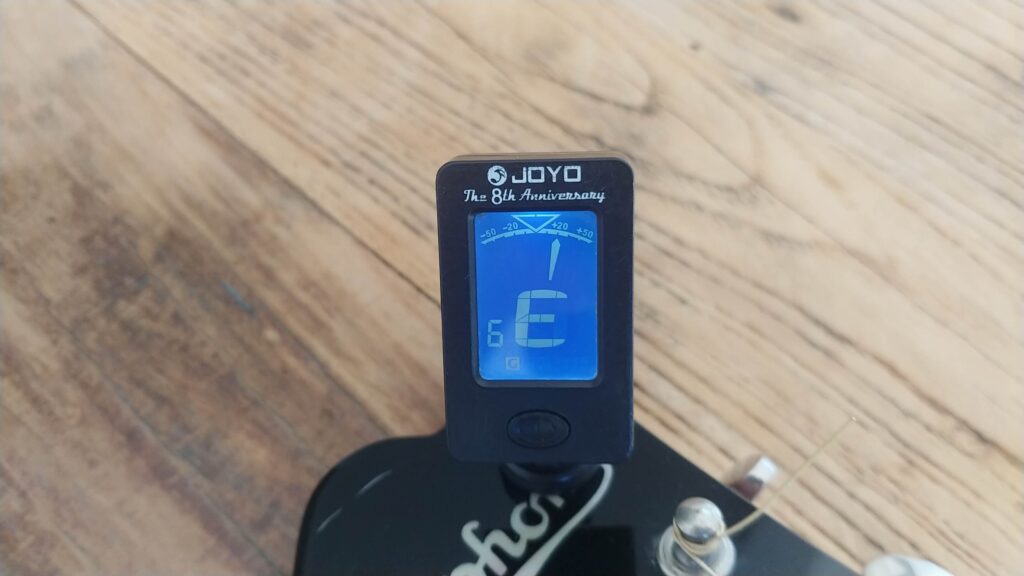
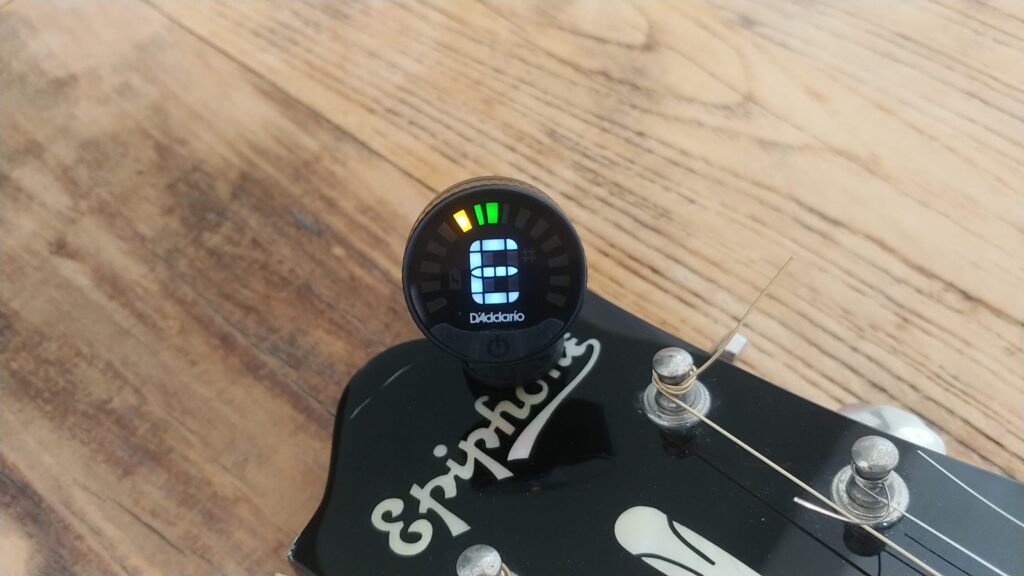
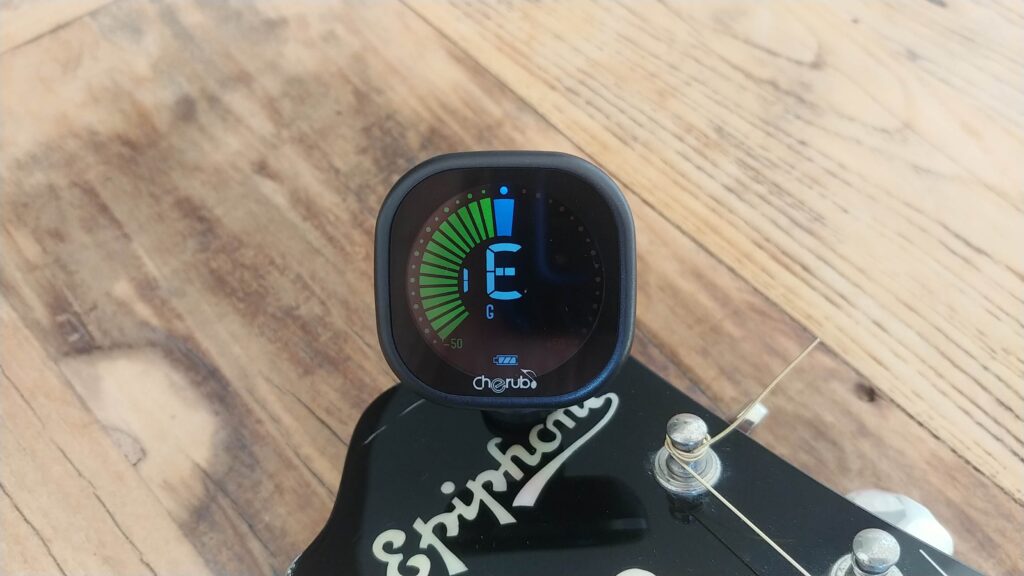
Clip-on guitar tuners offer a quick way to tune a guitar, but that speed is accompanied by a series of compromises.
The speed comes from their position on the headstock: clip-on tuners effectively become part of the guitar, turning the instrument’s vibrations into a pitch. But this also requires building sophisticated electronics into a tiny device.
I own Boss, Cherub, D’Addario and JOYO clip-on tuners and while they all look similar, their functions are vastly different. I attached each one to an electric guitar, which was running through my PreSonus Studio 24c USB Audio Interface and into the more accurate Tuner app in PreSonus’ Studio One 6.1 Professional Edition.
This allowed me to assess the accuracy and sensitivity of each tuner in real time. I judged them based on:
- Tuning accuracy
- Speed
- Features
- Interface and ease of use
How accurate are clip-on guitar tuners?
Most standard clip-on tuners are accurate to +/- 1 cent from the desired note. There are 100 cents in a half step interval, which suggests a high level of accuracy.
But the display on tuners isn’t broken up into 100 LED notches. There are typically 5 to 15 notches breaking up the interface, which typically encompasses a minimum/maximum 50 cents from the desired note. This limits how accurate each clip-on tuner is in practice.
This means the displays on each of my clip-on tuners represent anywhere from 3 cents to 10 cents. Does it make a difference?
The trained ear can detect differences as small as 0.5 Hertz (Hz). The difference between Hz and cents isn’t one for one – it depends on the pitch. As an example, adding 0.5 Hz to the guitar’s low E (87.41 Hz on the sixth string) is the equivalent of 9.875 cents. You can do this for other notes using this calculator.
It means most clip-on tuners are probably just accurate enough (although you’re not going to sound worse by using a more accurate tuning method). There are still other factors that come into play. A clip-on tuner’s electronics have to quickly derive the actual fundamental frequency from the array of harmonics also produced when striking a note.
Some clip-on tuners are better at this than others. There’s nothing more frustrating than a tuner that takes a few seconds to process the correct note, or one that displays the entirely wrong note as it processes the harmonics. It happens surprisingly often, but that’s the price of a quick tune compared to plugging into your computer to access its greater processing power.
Each of the tuners tested below has important display differences (which affects accuracy), as well as feature sets.
Cherub WST-670 guitar tuner

The Cherub (sometimes sold as Lekato) isn’t a big brand and, in fact, you can find fundamentally the same tuner being sold wholesale by Chinese manufacturers. (Check this Alibaba link or just search for “guitar tuner”.) Nonetheless, this tuner impressed me and is the one I currently prefer for a variety of reasons.
The Cherub WST-670 is substantially different then the newer WST-675 model in the Amazon Affiliate link below.
Accuracy and speed
The Cherub was as fast and accurate as any of the tuners I tested. It has the most LED notches (15), although if you’ve selected standard tuning and the low E is tuned to D, the first two or three notches will continue to stay lit. When getting closer to the correct pitch, one LED notch represents about 5 cents. When I was tuned 2-3 cents flat, it continued to flicker flat, which shows good accuracy.
Features and interface
The interface is a large color display, although could be more brightly lit.
It offers standard guitar tuning (and the ability to tune flat by up to two semitones), chromatic tuning; and two separate instrument tunings: violin and ukulele (C). However, the reference pitch, A = 440 Hz, can’t be adjusted, as with some other tuners.
It is the only tuner among this range to also offer Drop D, Open G, Open D and Open E. If you’ve never explored these tunings or are interested in them, this is the tuner to get.
However, it appears that the newer WST-675 model (Amazon affiliate link below) is now radically different. It appears to be almost exactly the same as the Boss TU-05 (see below), replacing the violin tuning with bass guitar (and also adding a baritone setting), dispensing with the open tunings, allowing the reference pitch to be adjusted to 431-449 Hz, and adding an extra flat setting (up to three semitones).
I prefer the WST-670 functions.
- Note Key Function : When the device is in G (Guitar) tuning mode, short press the back button to switch in between the altermate guitar tunings (DROP D, OPEN G, OPEN D, OPEN E) and flat tuning (b, bb).
- Tuning Range: A0(27.5Hz)~C8(4186Hz),Flat Tuning: B-Bb-Bbb.Tuning Modes: Chromatic, Guitar, Bass, Ukulele, Baritone.
- Built-in rechargeable battery allows up to 10 hours of continuous use per charge.
Boss TU-05 guitar tuner
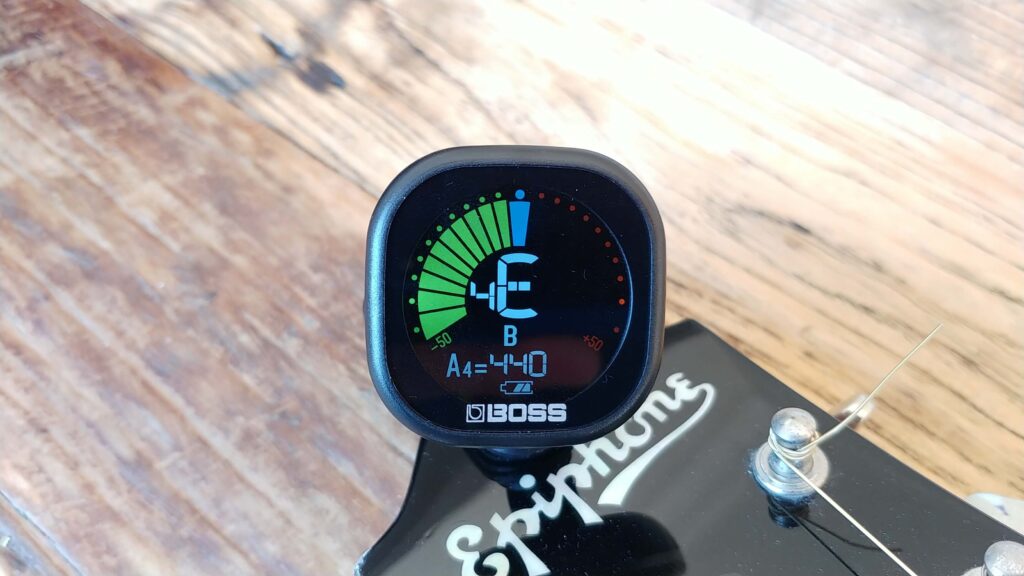
The Boss TU-05 tuner superficially looks exactly like the Cherub WST-670. It has the same face, however a closer look shows the clip is a different shape, while the color display and feature set are also subtly different.
Accuracy and speed
The Boss TU-05 tuner has slightly fewer LED notches than the Cherub WST-670 (10 versus 15) although in practice each notch still represents about 5 cents. The Boss was just as accurate and fast, again accurate to 5 cents and even flickering between notches when about 2-3 cents from the correct pitch.
Features and interface
The interface is very similar to the Cherub WST-670 – large and colorful but again, slightly dim compared to the brightest display (the D’Addario Nexxus 360 – see below).
There are slightly different tuning settings alongside standard guitar, chromatic and ukulele (C). While the Cherub WST-670 offers Violin tuning, the Boss offers bass guitar tuning, which is arguably more useful (i.e. the same as guitar, but an octave lower). However, the Boss doesn’t offer the Cherub WST-670’s standard open tuning settings – although the WST-675 has unfortunately cut this function and now almost mimics the Boss TU-05’s entire function set.
This includes its ability to tune up to three semitones flat and adjust the 440 Hz reference pitch from 431 to 449 Hz.
- Reliable and accurate headstock tuner with a large, high-contrast color display, four tuning modes, and built-in rechargeable battery
- Four tuning modes: chromatic, guitar, bass, and ukulele
- Rechargeable battery with up to 10 hours of continuous runtime
D’Addario Nexxus 360 guitar tuner

The D’Addario Nexxus 360 is the most distinctive tuner among the ones I own, and while it offers some benefits, it also has some flaws.
Accuracy and speed
The D’Addario Nexxus 360 display is incredibly bright and easy to read, yet slightly strange. It has seven LED notches but the two notches either side of the central green “in tune” notch are also green, as you can see in the photo above. There’s then a big jump down to an “out of tune” orange. I found the tuner would flick to orange when about 5 cents away from the desired pitch.
Features and interface
The Nexxus 360’s color display is so bright, it can be easily read even in harsh daylight. It’s small and the easiest tuner to maneuver. But that’s where the good news ends.
The only extra feature in the tuner is the ability to change the reference setting (A = 440 Hz), but this isn’t intuitive to set or easy to confirm a change.
While other tuners show this reading in full (440 Hz), the Nexxus 360 flashes each number individually when you switch it on (and it remembers the setting after switching off). For example, you can set A to be 438 by pressing the down arrow next to the on button and it will flash 4 then 3 then 8 when you switch it on. It won’t flash at all if set to 440 Hz.
I had inadvertently changed this setting meaning I was tuning flat without realizing it. Unfortunately there’s no user manual online to explain this. I’ve read some online comments from others suggesting the tuner is inaccurate – I suspect they’ve done the same thing. Some people have also raised issues with the USB connection, although I haven’t found any issues.
It’s quite surprising that there are no other standard tunings built in to the tuner, but perhaps this is related to its ultra-small size.
- QUICK TUNING: Tune your guitar or bass with ease with the Nexxus 360 Rechargeable Guitar Tuner. Featuring quick and accurate tuning, large screen,…
- RECHARGEABLE GUITAR TUNER: Enjoy 24 hours of guitar tuning time per charge without changing or buying batteries. Simply plug the supplied USB cable…
- EXTREME ACCURACY – Great accuracy with a wide calibration range (415-465Hz) guarantees precise performance. Calibration is also adjustable.
JOYO 8th anniversary guitar tuner

The JOYO 8th Anniversary clip-on guitar tuner is one of the cheapest on the market. Unfortunately sometimes you do get what you pay for.
Accuracy and speed
The JOYO 8th Anniversary tuner has only five LED notches representing 10 cents each. But regardless, the software has real trouble defining the fundamental note and is very slow to respond.
When my low E string was tuned slightly flat – about 3 cents – the tuner was pointing between 10 and 20 cents sharp. What the JOYO suggested was “in tune” was actually about 12 cents flat. Disturbingly, the tuner jumps around far more than any other tuner I’ve used.
I wondered if I’d inadvertently set the reference pitch, but the reference pitch can’t be adjusted on this tuner.
I have a second Joyo tuner and it had the same tuning problems.
Features and interface
The JOYO 8th Anniversary tuner is the only tuner I’ve tested that doesn’t have a color screen. It’s small and difficult to read. It’s also the only tuner that requires a separate battery (CR2032) rather than being charged with a USB cable.
It offers standard tunings for guitar, chromatic, bass, violin, ukulele (C) and ukulele (D).
The price is compelling, even for the slightly more advanced model in the Amazon affiliate link below, but you’re taking your chances with this one.
- Highly sensitive tuner, metronome beat mode, suitable for music teachers, professional and junior players even in noisy environments.
- Variety of tuning: 6 C standard pitch bass and string instruments, guitar, bass, ukulele, violin, tuning range: OA (27.5Hz) -8C (4186.01Hz).
- Easy to read and set, clear LCD digital display, easy to read, automatically shut down if not played, automatic shutdown within 5 minutes.




